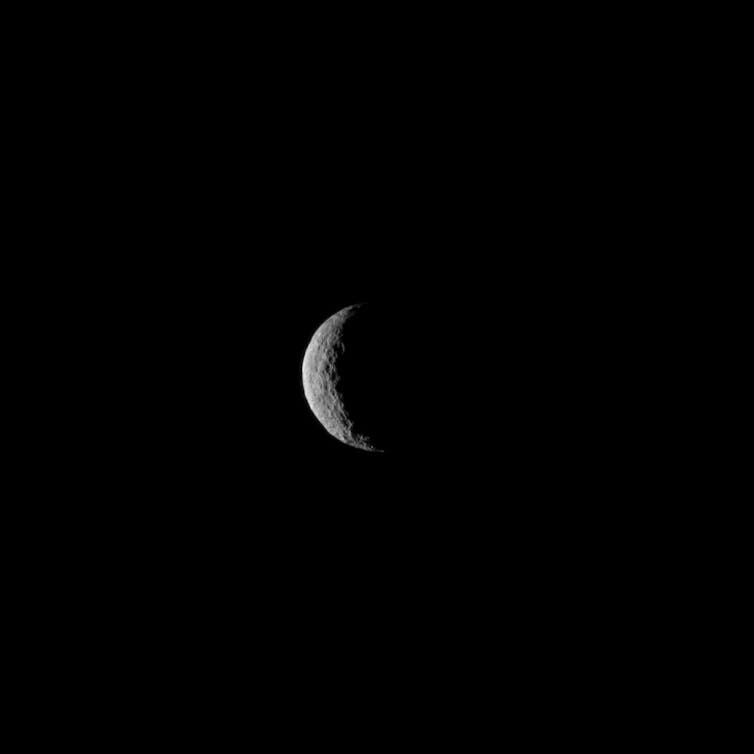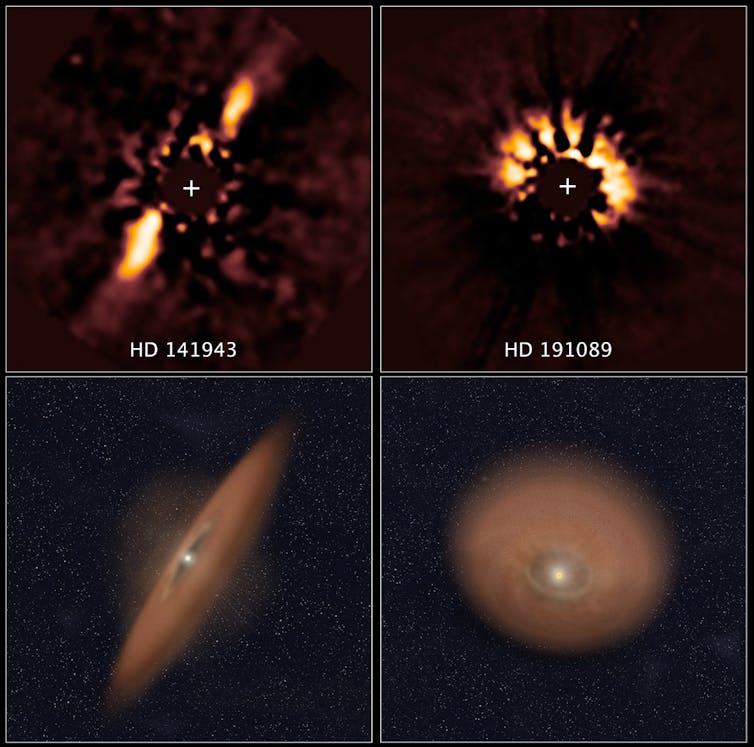
Curious Kids is a series for children of all ages. Have a question you’d like an expert to answer? Send it to CuriousKidsCanada@theconversation.com.
Why does it matter if Pluto is a planet or a dwarf planet? Because for me it just makes it more confusing in our solar system. I know that some things in space are planets and some are stars and some are other names like moons or comets. Dwarf planet is a more different name and I think it just makes it more confusing. — Timmy, 11, Kitchener, Ont.
“Comet,” “star” and “planet” are category names that immediately tell you something important about what they describe.
Our solar system consists of the sun, planets (which orbit around the sun) and small bodies (which either orbit around the sun or planets). The “small bodies” category is divided up into even smaller categories, mostly depending on the shape and size of orbits.
Read more: What is a dwarf planet?
In 1801, astronomers discovered Ceres, which was initially categorized as a “planet.” Astronomers measured that it was much smaller than the other known planets. Soon, a lot of smaller objects were discovered on orbits very close to Ceres. These small bodies were categorized as “asteroids” and we have since discovered hundreds of thousands of these in the asteroid belt.

New discoveries
A similar process of discovery and re-categorization happened for small bodies further out in the solar system.
Pluto was discovered in 1930 and was called the ninth planet in our solar system for many decades. But astronomers soon learned that Pluto was pretty different from the other eight planets: it’s on a tilted orbit and it’s way, way smaller than the other planets.
Over the years, astronomers discovered more and more small, planet-like objects that crossed Pluto’s orbit. These are now categorized as “Kuiper Belt objects.” It was looking more and more like Pluto might fit in better with the category of Kuiper Belt objects than with planets.
Read more: How we discovered 840 minor planets beyond Neptune – and what they can tell us
In 2005, a new object was discovered in the outer solar system, Eris, that is even heavier than Pluto. This led astronomers to consider if both Eris and Pluto are planets or not. Astronomers thought this was an important enough decision that the International Astronomical Union voted on it in 2006. Astronomers decided that rather than demoting Pluto to a plain old Kuiper Belt object, they would make a new category of small body called a “dwarf planet.” Pluto and Eris would both be part of this new category.
How planets form
Solar systems like ours form from big clouds of dust and gas that collapse into disks around young stars, but astronomers are still learning exactly how that process works. We use telescopes to look carefully at forming solar systems far away, but they are so far that it’s really hard to see the planets forming directly.
A planetesimal — a baby planet — first forms from clumps of dust in a disc orbiting a young star. Planetesimals then grab nearby pebbles, dust and sometimes even smaller planetesimals with their gravity, which gets stronger as they get bigger. When they get to be a few hundred kilometres across, they have enough gravity to pull themselves into a round shape, which is the definition of a dwarf planet.

Measuring small bodies in our solar system, including dwarf planets, and comparing them with computer simulations is another way to see how our solar system formed. Our current theory is that there must have been a lot of dwarf planets that formed in our solar system.
Ceres, in the asteroid belt, and Pluto, Eris and about a dozen other Kuiper Belt objects are big enough to be in the dwarf planet category. This means that while they are planetesimals that grew big enough to be round, they did not develop a gravity strong enough to grab all the other planetesimals near their orbit.
Other solar systems
Astronomers have now measured more than 5,000 exoplanets, planets in other solar systems. We won’t be able to measure dwarf planets there for a very long time, but the ones we’ve found in our own solar system can teach us about how planets form everywhere.
Hello, curious kids! Do you have a question you’d like an expert to answer? Ask an adult to send your question to CuriousKidsCanada@theconversation.com. Please tell us your name, age and the city where you live.
And since curiosity has no age limit — adults, let us know what you’re wondering, too. We won’t be able to answer every question, but we will do our best.
https://news.google.com/__i/rss/rd/articles/CBMiaWh0dHBzOi8vdGhlY29udmVyc2F0aW9uLmNvbS9jdXJpb3VzLWtpZHMtd2h5LWRvZXMtaXQtbWF0dGVyLWlmLXBsdXRvLWlzLWEtcGxhbmV0LW9yLWEtZHdhcmYtcGxhbmV0LTE3Nzg4OdIBbWh0dHBzOi8vdGhlY29udmVyc2F0aW9uLmNvbS9hbXAvY3VyaW91cy1raWRzLXdoeS1kb2VzLWl0LW1hdHRlci1pZi1wbHV0by1pcy1hLXBsYW5ldC1vci1hLWR3YXJmLXBsYW5ldC0xNzc4ODk?oc=5
2022-06-05 12:22:26Z
CBMiaWh0dHBzOi8vdGhlY29udmVyc2F0aW9uLmNvbS9jdXJpb3VzLWtpZHMtd2h5LWRvZXMtaXQtbWF0dGVyLWlmLXBsdXRvLWlzLWEtcGxhbmV0LW9yLWEtZHdhcmYtcGxhbmV0LTE3Nzg4OdIBbWh0dHBzOi8vdGhlY29udmVyc2F0aW9uLmNvbS9hbXAvY3VyaW91cy1raWRzLXdoeS1kb2VzLWl0LW1hdHRlci1pZi1wbHV0by1pcy1hLXBsYW5ldC1vci1hLWR3YXJmLXBsYW5ldC0xNzc4ODk
Tidak ada komentar:
Posting Komentar